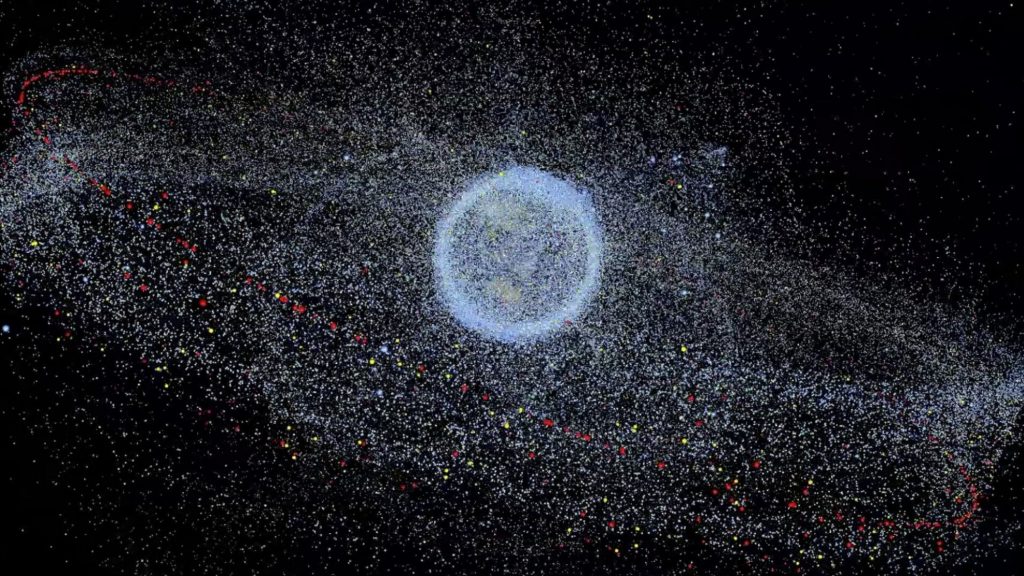
In March, the U.S. Space Force’s 18th Space Control Squadron (18SPCS) reported the breakup of Yunhai 1-02, a Chinese military satellite that launched in September 2019. It was unclear at the time whether the spacecraft had suffered some sort of failure — an explosion in its propulsion system, perhaps — or if it had collided with something in orbit.
Now, thanks to astrophysicist and satellite tracker Jonathan McDowell, we know that a small piece of the Russian Zenit-2 rocket (that launched a Tselina-2 electronic spy satellite in September 1996) smashed into the Chinese satellite…
Satellite war? Spy war? Was this impact intended or not?
Russian rocket smashes Chinese military satellite
On Saturday (Aug. 14), McDowell spotted an update in the Space-Track.org catalog, which the 18SPCS makes available to registered users. The update included “a note for object 48078, 1996-051Q: ‘Collided with satellite.’ This is a new kind of comment entry — haven’t seen such a comment for any other satellites before,” McDowell tweeted on Saturday.
Space-Track catalog updated today with a note for object 48078, 1996-051Q: “Collided with satellite”.
This is a new kind of comment entry – haven’t seen such a comment for any other satellites before. Let’s look a bit closer:— Jonathan McDowell (@planet4589) August 15, 2021
He dove into the tracking data to learn more. McDowell found that Object 48078 is a small piece of space junk — likely a piece of debris between 4 inches and 20 inches wide (10 to 50 centimeters) — from the Zenit-2 rocket that launched Russia’s Tselina-2 spy satellite in September 1996. Eight pieces of debris originating from that rocket have been tracked over the years, he said, but Object 48078 has just a single set of orbital data, which was collected in March of this year.
“I conclude that they probably only spotted it in the data after it collided with something, and that’s why there’s only one set of orbital data. So the collision probably happened shortly after the epoch of the orbit. What did it hit?” McDowell wrote in another Saturday tweet.
48078 is a small debris object from the Zenit-2 rocket that launched a Tselina-2 electronic spy sat in Sep 1996. Between 1997 and 2021, 8 debris objects were tracked from the rocket. This one, added to the catalog in Mar 2021, has only a single element set, epoch 2021 Mar 16
— Jonathan McDowell (@planet4589) August 15, 2021
Yunhai 1-02, which broke up on March 18, was “the obvious candidate,” he added — and the data showed that it was indeed the victim. Yunhai 1-02 and Object 48078 passed within 0.6 miles (1 kilometer) of each other — within the margin of error of the tracking system — at 3:41 a.m. EDT (0741 GMT) on March 18, “exactly when 18SPCS reports Yunhai broke up,” McDowell wrote in another tweet.
Thirty-seven debris objects spawned by the smashup have been detected to date, and there are likely others that remain untracked.
And indeed, a quick analysis of the TLEs show that Yunhai 1-02 (44547) and debris object 1996-051Q (48078) passed within 1 km of each other (so within the uncertainty of the TLEs) at 0741 UTC Mar 18, exactly when 18SPCS reports Yunhai broke up.
— Jonathan McDowell (@planet4589) August 15, 2021
Despite the damage, Yunhai 1-02 apparently survived the violent encounter, which occurred at an altitude of 485 miles (780 kilometers). Amateur radio trackers have continued to detect signals from the satellite, McDowell said, though it’s unclear if Yunhai 1-02 can still do the job it was built to perform.
McDowell described the incident as the first major confirmed orbital collision since February 2009, when the defunct Russian military spacecraft Kosmos-2251 slammed into Iridium 33, an operational communications satellite. That smashup generated a whopping 1,800 pieces of trackable debris by the following October.
And indeed, a quick analysis of the TLEs show that Yunhai 1-02 (44547) and debris object 1996-051Q (48078) passed within 1 km of each other (so within the uncertainty of the TLEs) at 0741 UTC Mar 18, exactly when 18SPCS reports Yunhai broke up.
— Jonathan McDowell (@planet4589) August 15, 2021
Increasing space collisions ahead
However, we may be entering an era of increasingly frequent space collisions — especially smashups like the Yunhai incident, in which a relatively small piece of debris wounds but doesn’t kill a satellite. Humanity keeps launching more and more spacecraft, after all, at an ever-increasing pace.
“Collisions are proportional to the square of the number of things in orbit,” explains McDowell. “That is to say, if you have 10 times as many satellites, you’re going to get 100 times as many collisions. So, as the traffic density goes up, collisions are going to go from being a minor constituent of the space junk problem to being the major constituent. That’s just math.”
We may reach that point in just a few years.
The nightmare scenario that satellite operators and exploration advocates want to avoid is the Kessler syndrome — a cascading series of collisions that could clutter Earth orbit with so much debris that our use of, and travel through, the final frontier is significantly hampered.
Space junk problem
Our current space junk problem is not that severe, but the Yunhai event could be a warning sign of sorts. It’s possible, McDowell said, that Object 48078 was knocked off the Zenit-2 rocket by a collision, so the March smashup may be part of a cascade.
“That’s all very worrying and is an additional reason why you want to remove these big objects from orbit,” said McDowell. “They can generate this other debris that’s smaller.”
Small debris is tough to track, and there’s already a lot of it up there. About 900,000 objects between 0.4 inches and 4 inches wide (1 to 10 cm) are whizzing around our planet, the European Space Agency estimates. And Earth orbit hosts 128 million pieces of junk 0.04 inches to 0.4 inches (1 mm to 1 cm) in diameter, according to ESA.
Orbiting objects move so fast — about 17,150 mph (27,600 kph) at the altitude of the International Space Station, for example — that even tiny shards of debris can do serious damage to a satellite.
The question here is if this impact was intended or not. Is there a satellite war going on around Earth? [Live Science]
Now subscribe to this blog to get more amazing news curated just for you right in your inbox on a daily basis (here an example of our new newsletter).
You can also follow us on Facebook and/ or Twitter. And, by the way you can also make a donation through Paypal. Thank you!
You should really subscribe to QFiles. You will get very interesting information about strange events around the world.














the resemblance looks like they are sharing some of the same spliced DNA material?
or maybe its all “relatively inbred”
so hard to tell these days.
Halloween 24-7 with these freaks.
The Russians don’t trust the Ching Chong Chicoms it was done purposefully.
If we see a Russian satellite damaged or destroyed, we’ll know it was the revenge of the Ching Chong’s.
Johnathan?
Is that a man or a woman? Get a haircut, sheesh. Fricken hippie.
its twatter,…..
my buddy’s a psychiatrist, says 90% of his clients looks just like Jonathan and promote the left side of the political spectrum.
so happy to be considered “normal”,……….
Hmmm, I thought the Pennsylvania tranny-bahomet health director had a ” sister?”
This creature looks like a prospective ” chest feeder.”
(Baphomet/Typo)
Here, for posterity. You can see the resemblance.
https://duckduckgo.com/?q=Pennsylvania+health+director&t=h_&iax=images&ia=images